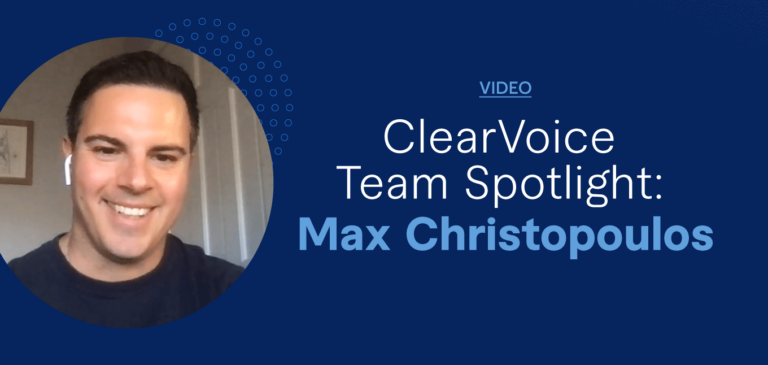Countless studies and reports have supported buzz that Arizona is one of the fastest-growing technology hubs in the country. Industry verticals like data storage, cybersecurity, space tourism and medical technology, in particular, have made big waves in recent years. Technology is propelling the local economy, as well as our ability to innovate to remain competitive and sustainable over time.
What companies are making this success and growth possible? Who are the characters in the endearing and inspiring narrative of tech in Arizona, and what tools and strategies are they using to tell their stories?
I’ve profiled five Arizona Technology Council members who offer a wide perspective of our community.
Retooling your brand’s story
A company’s story evolves based on business growth, mergers and acquisitions, changes in the marketplace, customer tastes, and more. With changing organizational realities, smart marketers ensure that storytelling also changes to deliver a new brand narrative effectively.
Do you keep an acquired brand’s name?
An acquisition can wildly affect a company’s story, whether they are the buyer or the one purchased. Trapp Technology, headquartered in Midtown Phoenix, has quickly scaled from an emerging startup to an IT powerhouse. Founded as a SaaS provider offering cloud application hosting in 2007, Trapp has evolved and refreshed their brand while acquiring four companies along the way.
Good press often immediately accompanies the news of an acquisition; the buyer is presumably doing well enough in their market to scale, and the purchased entity presumably had a product worth buying. But how are a company’s story and brand affected after the dust of the acquisition settles?
“One of our biggest challenges was handling negative online reviews of one of our acquisitions,” says Ashley Capps, marketing manager at Trapp. “Our team worked to improve the backend of the product, and tweaked the company’s well-known identity, adding a ‘Powered by Trapp’ byline to their logo and branding.”
When integrating an acquisition into your organization’s story and product line, evaluate the value of your acquired brand’s name and current market exposure.
Changing the brand story to capture a new audience
Phoenix-based Avnet, who is most known for its logistical supply chain services for large corporations, has made strategic acquisitions to shift their brand, story and customer journey. Acquisitions of Premier Farnell, Hackster.io, and Dragon Innovation have made it possible to offer a full lifecycle of services for startups, from product design to prototype production to full production and go-to-market strategy — a new type of offering the company is housing via Hardware Studio. Avnet still maintains their larger-scale, high-volume distribution of technology products to corporations across the world.
“We’ve repositioned our company to allow not just for high-volume production,” says Kevin Sellers, CMO of Avnet. “Now we can help small teams take an idea and not only produce a prototype but also help take the product to market. It’s really an end-to-end ecosystem from concept to sales.”
Writing a new brand story
Avnet’s changes were so significant that they necessitated a full company rebrand. The rebrand launched in April of 2017 and included the global branding campaign, “Reach Further.”
“We try to think of ourselves as Sherpas,” says Sellers. “Reach Further is our promise that Avnet will do whatever it takes to guide customers and partners toward their most ambitious goals. Its mantra reflects a solemn commitment we are making to makers, inventors, entrepreneurs, design engineers, and suppliers.
The campaign consisted of a new website and logo, paid and organic social media, video, digital and print advertising, SEO, and an internal engagement program for their thousands of employees around the world. They also introduced a new graphic element into their branding, the “A Frame,” which represents Avnet’s dedication to progress and collaboration.
Leveraging the magic of video
Video has become an important platform for storytelling and marketing, especially when targeting younger generations. The medium is extremely versatile and works to an organization’s benefit when sharing dense, scientific innovations. Video can also help relay both company and customer stories.
Using video to share the story of innovation
Space tourism has drawn much attention in recent years, with only a handful of companies competing in the sector. World View Enterprises, a Tucson-based space tech titan, is expanding the boundaries of travel. World View Enterprises’ Voyager human spaceflight system will give tourists the opportunity to see our planet as only astronauts have. In addition to their space tourism focus, World View is developing a new class of high-altitude vehicles called Stratollites.
“This product holds huge implications for a myriad of applications like delivering Internet to remote parts of the world, better weather forecasting, natural disaster support and more,” says Carmen Noriega, marketing and communications manager with World View. “We truly feel like we’re pioneers on an important mission, entering a new realm of discovery in the stratosphere.”
When introducing a revolutionary and complicated product or service, video can be a genius tool for sharing the innovation’s intent and benefits to the masses. World View does a masterful job of sharing their story through video.
“The nature of what we do is visually compelling,” says Noriega. Because the mechanics and engineering behind the company’s products are so complex, video is an obvious and effective tool to help World View share discoveries with the public.
In a reality of frequent disruption, videos also assist the organization maintain a consistent identity. “We are a living story that we share on a day-to-day basis,” comments Noriega. “We are constantly evolving and progressing as we experience R&D breakthroughs and learn from our mistakes.”
Onboarding clients through storytelling
Scottsdale-based technology startup Design Pickle is revolutionizing the way companies of all sizes can utilize visual elements in their everyday marketing.
“Too often design is left to the employee who knows how to dabble in Photoshop; they end up spending so much time on design that they don’t get their actual job done,” says Jim Pendicone, marketing director for Design Pickle. Design Pickle company offers unlimited graphic design services at a flat monthly rate, making it affordable for organizations of all sizes to obtain and integrate quality graphics into their daily communications and branding.
Video is a vital client-onboarding tool for Design Pickle. The company has developed a series of short clips that explain how to make a graphic design request, the limitations of their services, and the complete framework of what the customer should expect. These videos kick off the customer/designer relationship off with candor and truth and enable the client to get the best results possible.
Humanizing your company through video
Sarah Chamberlain, public relations manager at Yandy.com, a Phoenix-based online lingerie retailer, explains how the company uses videos to humanize their brand. Utilizing video on social media, digital marketing, and in event promotions, Yandy has consistently grown their customer base and engagement.
Some of their more popular videos include behind-the-scenes at photo shoots, makeup tutorials to go with Yandy’s amazing specialty costumes, and seasonal fashion trends. This medium has been a great tool for the company when showing off some of their more inventive products, like glow in the dark lingerie and swimwear. Video is a perfect tool for telling the story of specific products to the buyer.
Yandy also uses video to showcase their incredible runway shows; their swimwear collection was featured at the Spring 2017 New York Fashion Week. “It’s a great way for us to showcase our products as soon as the hit the runway, and makes our fans feel a part of the show and our success,” notes Chamberlain.
Highlighting product benefits with video
The marketing team at Trapp Technology knows better than most how challenging it can be to create compelling visual content when you’re dealing with SaaS products. Trapp’s video miniseries, Whiteboard Wednesdays, addresses frequently asked questions and topical discussions related to their services. These posts include man-on-the-street interviews about general IT knowledge, customer testimonials, and product demos.
Capps explains how the company utilizes video to show off their product’s advantages, “We are not naïve to the fact that our customers literally want less hardware in their offices, so we have to create a storyline that highlights the benefits of our services. We can’t toss a product in front of a camera; we have to showcase the impact that our services can have on a business through testimonials and other educational videos.”
Sharing the story of client success
Part of Avnet’s rebrand included a video campaign series sharing client success stories, particularly the journeys of startups emerging from their collaboration with ASU — ASU Innovation Lab. Avnet assisted both Owlet and Ubicquia in bringing their concept to market.
Owlet, a startup out of Provo, Utah, produces the Smart Sock, a small health monitor for newborn babies that notifies parents if the child’s heart rate or oxygen levels fall dangerously low. Avnet’s video shares the story of Owlet’s founders and shows how their services guided the company from conception to retail. The product is now on shelves in stores like Buy Buy Baby.
Tre Zimmerman, co-founder of Ubicquia, was working on another project entirely when he conceived the idea for his invention. Studying pollution in Rome, Zimmerman struggled with the cost of batteries and other equipment needed for his research. That’s when he developed Kairo, a device that can use the existing electricity emitting from streetlights, enabling “cities to become smart overnight.” The customer video shares how Avnet became an integral part of Ubicquia’s success in taking Zimmerman’s invention from idea to product to market.
Both video case studies offer the perfect balance of highlighting both the customer journey and the role Avnet played in their success.
Highlighting corporate culture
In today’s job market, a company’s culture must also become part of the story. Both Trapp and Avnet faced challenges when incorporating new team members into their existing squad and relied on the strengths and foundations of their cultures to create larger, stronger groups.
Avnet now boasts over 15,000 employees and relies on consistent and transparent communication to evoke their story internally. “With big changes like we experienced, it’s common for anxiety to infect the office,” Sellers says. “We made a concerted effort to keep employees educated on what was going on and the future changes they could expect.”
Delivering authentic stories
“You can’t tell a story to an external audience if the story isn’t authentic,” Sellers goes on. “We had to discover what makes Avnet who we are; we dissected our truth. We learned that the essence of our business was built on service orientation, great communication, levels of support to customers, and partnerships. We may not win any Academy Awards, but we will be the company the winner thanks in their acceptance speech.”
Extending company culture to customers
Company culture extends not only to an organization’s staff but also to their clientele. Service to customers is at the heart of Design Pickle’s story. “We want our customers to love our brand for who we are and what we can help them achieve,” says Pendicone. Their four core values are friendly, truth, smart-working, and service, all of which were devised with the customer in mind.
To keep their customers happy and satisfied, Trapp offers 24-7, US-based customer support, something they attribute to their success and brand value.
Listening is a big part of storytelling
Listening to your clients is key to providing optimal service.
“We are constantly listening to our customers,” notes Chamberlain. Yandy uses surveys to measure not only current satisfaction but also future interest. These insights allow them to forecast trends with impressive accuracy; their early understanding of the direction of online retail is one of the company’s most valuable distinctions.
Being in tune with your fans also allows you to keep your brand aligned with user satisfaction. “The Yandy girl is unapologetically connected to her mind, body, and own brand of sexy,” Chamberlain goes on to say. “We maintain consistency by remembering what our customers want.”
Making user experience part of the story
The staff at Yandy also pride themselves on their user experience, a passion of the organization’s CTO, Aras Koktas.
“Technology is an integral part of our success,” explains Koktas. “To compete with big brands, we knew we had to have an accessible online platform. Our website is part of our value and brand, and we’ve built it to make it more secure than a brick-and-mortar retail store.”
Koktas’ vision enabled the company to double in size from Q1 of 2016 to Q1 of 2017, and the company was recently honored with an award for the Best Retail Website at the 2017 American Business Awards.
There will be many chapters to come
World View, Avnet, Design Pickle, Yandy, and Trapp are just a few of the many Arizona-based companies leading the conversation of our industry’s success; the Arizona Technology Council is proud and honored to call them members. The tale of tech in the Grand Canyon State is still in its early chapters, with much more to come.
This industry will likely propel our economy for generations to come, while more and more organizations evolve to fit the definition of a ‘technology company’ as they integrate modern innovations into their operations. And the company stories will only get more complex and interesting as advancements continue and more players come to the table.







